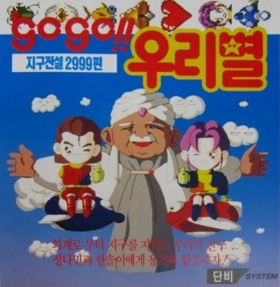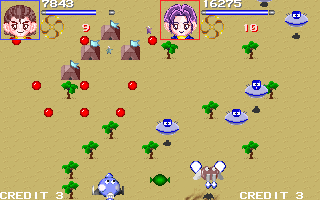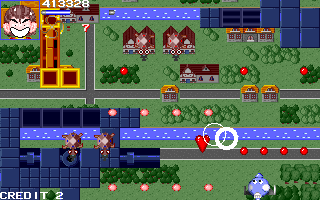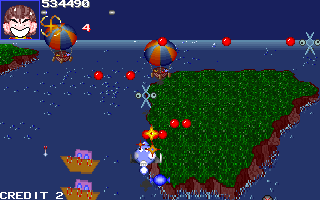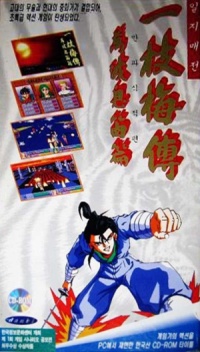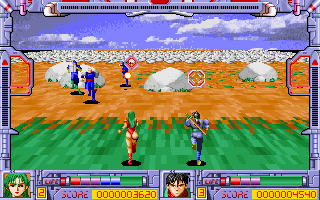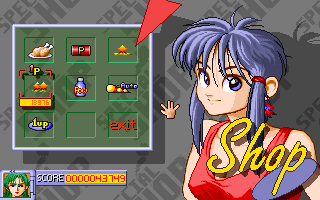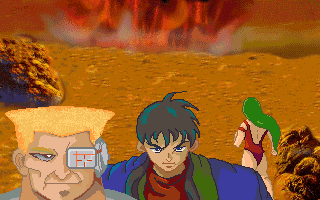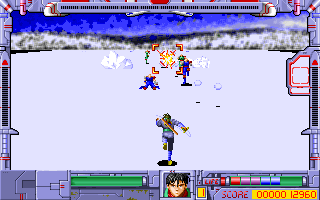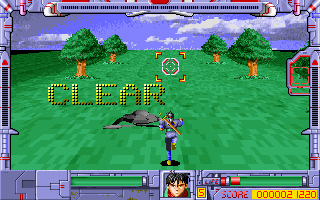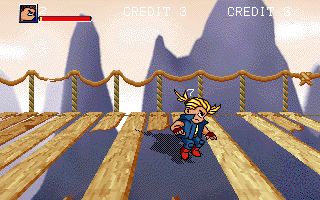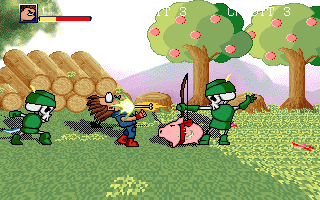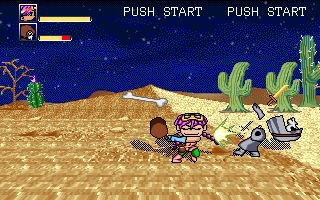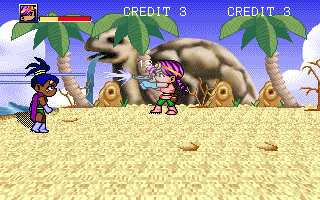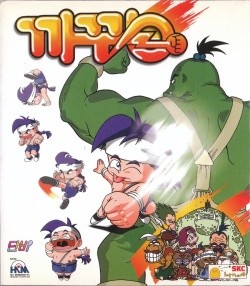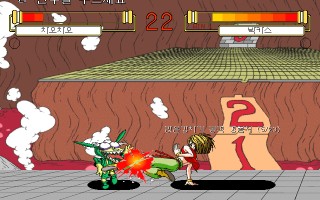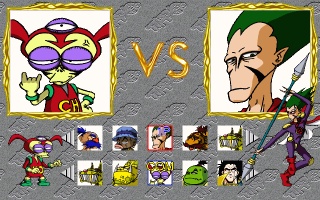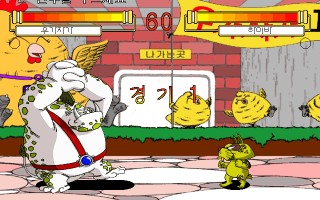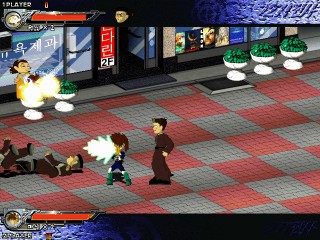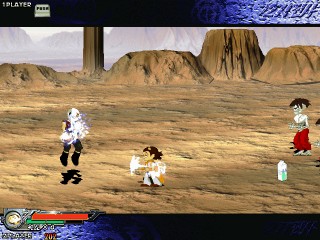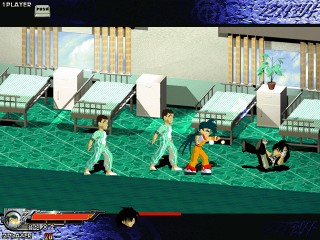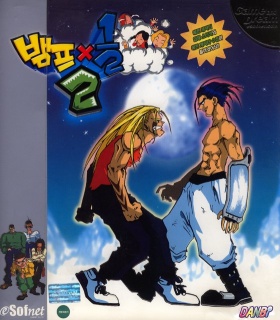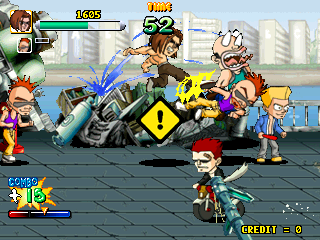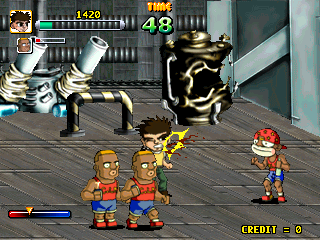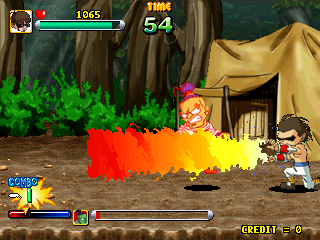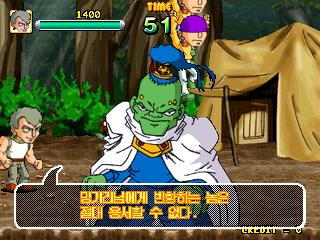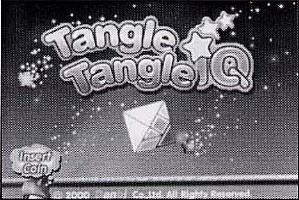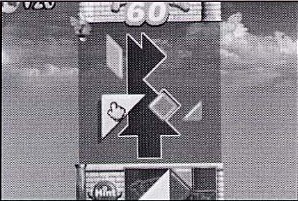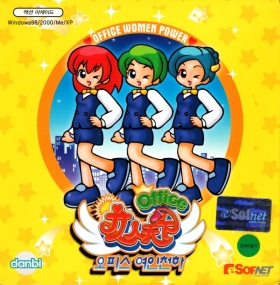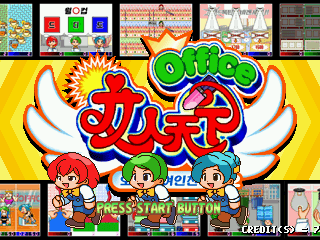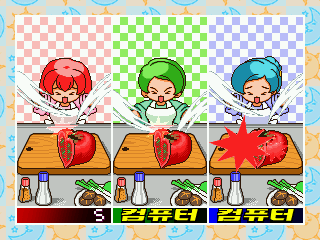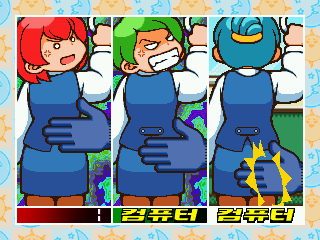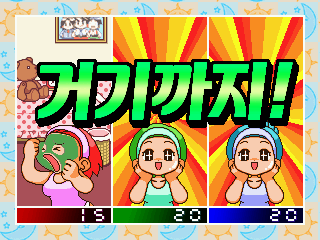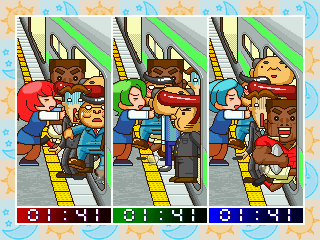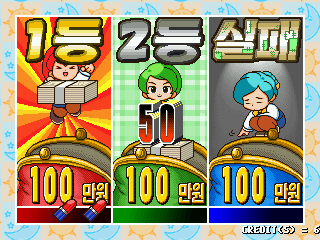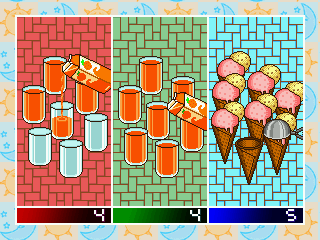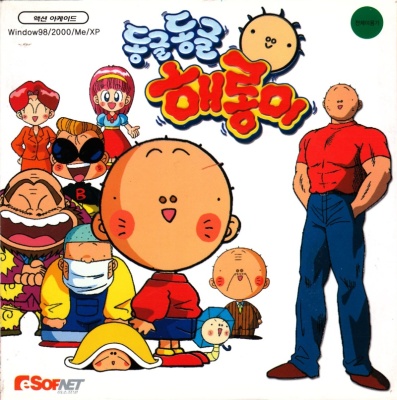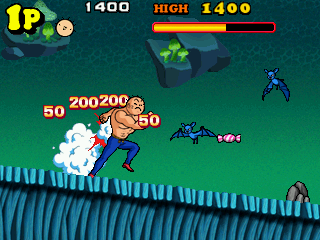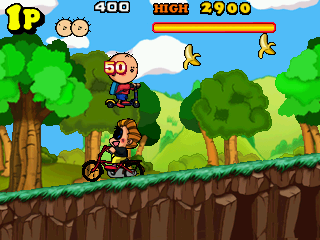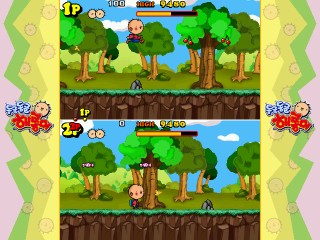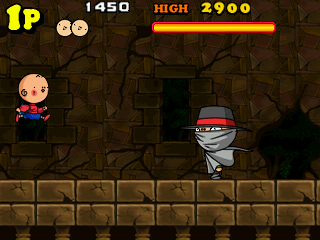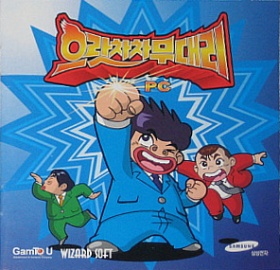A History of Korean Gaming
단비 시스템 Danbi System
|
Founded: |
1993 |
|
Status: |
merged into GamToU (June 17, 2002) |
|
Key People: |
김성식 Kim Sungshik: |
|
Website: |
www.danbi.com (offline) |
Danbi System was founded in 1993 by Kim Sungshik, who had started his career with an unlicensed freeware MS-DOS port of Konami's Knightmare and already made himself a name at Soft Action with Fox Ranger1. Hist chief officer at Danbi was his own wife, Yun Jeongseon2. After some early successes the company specialized on adaptions of comics or cartoons, often with questionable quality standards. Because of this, Danbi eventually lost the faith of the customers and their releases became more and more obscure.
After the company started targeting the arcade market in 19983 the quality of their products went up again. However, at the time arcades had already begun to lose popularity to the PC Bang. On June 17, 2002 Danbi System merged with the publisher GamToU, an offshoot that had split from Samsung's game division in June 20004, and seems to have closed its doors by the end of 2003.
Games
고고 우리별 (GoGo Uribyeol) - IBM PC (December 25, 1993)
Kim Sungshik's first game after leaving Soft Action stays close to the programmer's roots. The vertical scrolling shmup takes a similar approach to Box Ranger as a cutesy parody, even some of the enemy types are almost the same. It offers more variety, though, and for the first time in a Korean home entertainment shooter simultaneous 2-player gameplay.
Other than most later Danbi games, the game comes without a license, but that apparently had only positive effects on its quality. It's still rather generic in the way it is played, and there are some technical issues, but the game is fun, nonetheless.
일지매전 ~만파식적편~ (Iljimae-jeon: Manpa Sikjeok-pyeon) - IBM PC (October 1994)
Cover
Iljimae-jeon is based on the same scenario as the RPG by Sanjini, but it takes much more liberty with the template. So instead of the medieval Korean setting Danbi presented a futuristic shooter from the Space Harrier school.
Other than the protagonist in the Sega classic, the three heroes are confined to the ground, but they compensate that lack with a number of special melee moves that at the same time are useful to avoid enemy attacks. The stages contain a lot of obstacles, but anything that isn't flat on the ground can be destroyed. Certain enemies drop extras like weapon boosts, autofire and, most importantly, life recharges. These bonuses come in healthy supply, but in the later stages it becomes difficult enough to survive from one recovery item to the next. There's also a ticket to a shop where all those extras in addition ot upgradeable super attacks can be bought. But dying resets the status of the ticket, so it is not very likely to see the store ever again beyond the second stage.
Seeing anything beyond the first stage is not a given either, as the number of continues is strictly limited and many bosses take ridiculous amounts of damage before giving up. Only the super attacks harm them more significantly, but they of course are only available through visiting the store, and using up continues downgrades them again. Getting the aid of a second player makes things more controllable, but both have to share not only the extra items, but also draw from the same tiny pool of credits.
Iljimae-jeon seems to be one of the more technically solid Korean games. There's hardly any bugs to find, and everything moves fast and smooth. Genre-typically close objects appear very pixellated, but the action is intense enough to make one not notice the issue. The package is rounded up by a classic chiptune-style soundtrack. If it weren't for the extreme difficulty putting off most gamers, Iljimae-jeon might have become one of the poster childs of Korean action gaming like the For the Day series. Danbi announced a sequel in 1996, which never came out.
마이러브 ~카오스 대작전~ (My Love: Chaos Daejak-jeon) - IBM PC (April 1996)
Cover
With Danbi's first licensed game also began all of Danbi's problems. The comic series apparently is a crazy, Dragonball-esque mess, which is pretty well represented in the cutscenes. The story revolves around three kids, which all are playable at the same time by up to three players. There's also a weird mode where one of the players takes control of the monsters, but as that player has to follow the same restrictions for extra lives and credits, that mode doesn't quite work out.
The game itself isn't as bad as some of Danbi's later beat-'em-ups, but the controls feel very loose. Often it is plainly impossible to attack enemies without taking damage in return, and passages with holes in the ground are a pain in the ass. Regardless, thanks to the pull of the manhwa license, Danbi managed to sell 25,000 copies of the game5.
까꿍 (Kkakkung) / Kakoong - IBM PC, Windows (February 1997)
Cover
While it draws just as much inspiration from the Dragonball aesthetic than My Love, Kakoong is even more tasteless than its Japanese role model. The introduction shows the titular hero taking a crap on a platform. First one only sees his strained face and has to wonder what physical challenge he has to endure, but then the camera zooms out to reveal everything.
Players who haven't already been chased away by this gross display get "treated" to a decidedly mediocre 1-on-1 fighting game. The controls work a tiny bit better than in most other examples of the genre on the PC, but there's not much meaning to the fighting overall. The game works on a weird experience system, which encourages to use the same move over and over again and destroys any balancing the game might have had in the first place.
뱀프x½ (Vamp x ½) - IBM PC, Windows (December 1997)
Now this is a complete joke of a game. The controls are crap, the four (non-selectable, every player has to take the one that is locked to his position) protagonists barely have any moves, and everything feels and looks cheaply made. It is also extremely badly programmed, on all three tested systems it would just repeat the first stage over and over again.
There's a four player mode and a special panorama display to fit them better on the screen, but that only means four people not having fun at the same time. Probably no one was caring about games by Danbi anymore by the time this was released, that appears to be the only explanation for there not having been any outrages because of this awful piece of garbage.
Quick Info:
|
Developer: |
Danbi System |
|
Publisher: |
Samsung |
|
Genre: |
Beat-'em-Up |
|
Theme: |
Licensed |
12지전사 (12-ji Jeonsa) / Assault of Hellkaiser - Windows (December 1998)
Advertisement
Apparently Danbi started to consider themselves specialist for belt scrolling beat-'em-ups licensed to comic book franchises that look like the author really liked Dragon Ball. Thankfully 12-ji Jeonsa, other than Vamp 1/2, is not completely broken, but still utterly pointless and boring. Enemies are mostly harmless, but take just far too long to defeat and the game is overall too slow. While Danbi's former games had at least the charme of their pixel art going for them, 12-ji Jeonsa relies on prerendered graphics instead.
뱀프x½ (Vamp x ½) / Vamp x ½ 2 - Arcade (August 1999), Windows (2000)
Windows Cover
Now this is more like it. Looks like Danbi eventually went on to finish Vamp 1/2 as an arcade game after selling the alpha version to PC gamers. The final product actually turned out a decent if by-the-books brawler.
The new Vamp x 1/2 reused the sprites from the first game, but many new animations were added. The four characters now actually got a decent set of moves, which can also actually be used, as the controls are much better. The characters can transform into two more powerful forms with consecutively more crazy hair and more devastating attacks. Yes, Dragon Ball used to be that popular. The backgrounds still look rather underproduced, but they're worlds better than before, too.
With the hard to read title Vamp x 1/2 2, this version was also released for PC after some delay.
Office 女人天下 (오피스여인천하 / Office Yeoin Cheonha) / Office Women Power - Arcade (September 2001), Windows (January 20, 2002)
Bishi Bashi, Korean style! 30 mini games show the "average" working day of three female office workers. Nothing imaginable is left out, from avoiding perverts in the subway over sorting files up to evading a swarm of shitting birds on the way home, everything is taken care of.
Like the Konami series, all games are controlled by a set of three big colored buzzer buttons which have to be hit either as fast as possible, in the right rhythm or according to visual cues on screen. Despite the simplicity, the crazy premises make this a very fun game to play. Only the voice of the Korean commentator in between stages gets annoying fast.
Danbi was selling the arcade machines at 780,000 Won apiece, and apparently it went over pretty well. At least shortly after its release, Danbi System expressed confidence that they'd be able to sell 2,000 units6.
동글동글 해롱이 (Donggeul Donggeul Haerongi) - Windows (December 26th, 2001), Arcade (2002)
Windows Budget Release Cover
Donggeul Donggeul Haerongi is a very obvious Wonder Boy clone, only with another graphics template based on a (this time originally Japanese) cartoon series, and of course new levels.
Little else has changed. Just like in the original the hero has to make his way from left to right with the time limit constantly gnawing at his life bar, so he has to eat the fruits that are dispersed everywhere in order to survive. There also are powerups hidden under shells that offer worms(!) as throwing weapons and a scooter that replaces Wonder Boy's skateboard. Haerong can also turn invincible when he transforms into a big topless muscular guy.
Still, the well proven concept works as well as ever and the game easily is Danbi's best title overall. It's simple good fun and all the while looks just adorable. There's even a splitscreen mode (in higher resolution) where two players race each other to the finish line.
Unreleased Titles:
일지매전 2 (Iljimae-jeon 2) (1995-1996)
Shadow Ranger (1995)
References
1. ET News 09/19/2001
2. PC Champ 4/1997, page 143
3. ET News 09/19/2001
4. Game Meca 20/6/2002
5. ET News 04/04/1997
6. ET News 10/9/2001

